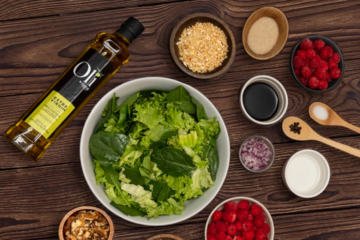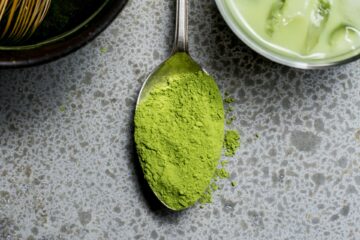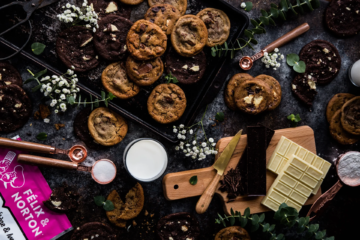In culinary delights, butter has long reigned as a staple ingredient known for its rich flavor and versatility. However, the world of creamy cuisine extends far beyond butter, encompassing diverse ingredients that contribute to luscious textures and exquisite flavors. From velvety sauces to decadent desserts, this exploration takes us through the myriad options beyond butter, elevating dishes to new heights of indulgence.
Creamy foundations: Exploring alternative fats
While butter remains a classic choice for creating creamy bases, an array of alternative fats takes into the spotlight, each with its distinctive character. Olive oil, for instance, introduces a fruity and nuanced note to dishes, infusing them with a Mediterranean essence. A drizzle of high-quality olive oil can transform a simple pasta dish into a gourmet experience, where the silkiness of the oil dances on the palate.
With its creamy texture and healthful properties, avocado is also a remarkable butter substitute. Mashed avocado can be spread on toast, replacing butter with nutrients and a luxurious mouthfeel. In sweet and savory creations, these alternative facts demonstrate that the realm of creaminess can be navigated in myriad ways.
From nuts to nirvana: The world of nut-based creams
Nut-based creams provide a haven for those seeking dairy-free alternatives while still indulging in creamy pleasures. Almonds, cashews, and even macadamias find their way into blenders, transforming into smooth, velvety creams rivaling their dairy counterparts. These nut-based creams serve as the building blocks for sauces, dressings, and desserts that are both satisfying and wholesome.
Cashew cream, for instance, is a versatile canvas that can be transformed into a luscious alfredo sauce or a silky cheesecake filling. When reduced and blended, almond milk takes on a luxurious texture perfect for enriching soups or curries.
The alchemy of emulsification
At the heart of creating creamy wonders lies the art of emulsification. This scientific marvel involves merging two immiscible liquids, typically oil and water, to produce a harmonious and smooth mixture. Emulsification is the enchanting process that enables the creation of creamy dressings, sauces, and other culinary delights.4
Vinaigrettes, a classic example of emulsification, combine oil and vinegar to form a creamy yet light dressing that clings to salads. Mayonnaise, another product of this process, marries oil and egg yolks into a creamy condiment that elevates sandwiches and dips. The science of emulsification showcases the magical possibilities that arise when seemingly incompatible elements come together to create culinary enchantment.
Sweet symphonies: creamy desserts reimagined
Creamy desserts extend beyond the conventional, inviting innovation and experimentation. Plant-based ingredients like coconut milk and silken tofu provide the lusciousness expected from traditional dairy desserts. With its natural richness, coconut milk forms the basis of dairy-free ice creams that celebrate flavor and texture.
Silken tofu is a versatile chameleon, blending seamlessly into custards, mousses, and even cheesecakes. Its neutral taste allows other flavors to shine, while its creamy consistency ensures a delightful mouthfeel. These reimagined desserts cater to dietary preferences and exemplify how the pursuit of creaminess knows no bounds.
Nangs meaning whipping cream chargers, hold the secret to transforming ordinary toppings into culinary delights. These tiny canisters are filled with nitrous oxide, a gas that, when released into liquids like cream, aerates and thickens them, creating velvety, delectable toppings that elevate dishes to a whole new level of indulgence.
Cultivating creaminess: The role of dairy and non-dairy milk
Cultivating creaminess goes hand in hand with the choice of dairy and non-dairy. With its rich fat content, dairy milk has been a traditional go-to for achieving creamy textures. From béchamel sauces to custards, dairy milk infuses dishes with a luxurious smoothness that has stood the test of time.
The rise of non-dairy milk alternatives has expanded the horizons of creaminess. Creamy coconut milk, derived from the grated flesh of coconuts, serves as a versatile base for savory and sweet dishes. Its natural sweetness and thickness offer a tropical twist to traditional recipes. Almond, oat, and soy milk also play a significant role in the creamy universe, allowing those with dietary restrictions to partake in the joy of indulgent textures.
The dance of textures: gelatin, agar-agar, and beyond
The journey through creaminess isn’t solely about taste; texture also takes center stage. Gelatin, a protein derived from animal collagen, has long been utilized to create smooth and jiggly desserts like panna cotta and mousses. Its unique ability to set liquids into a firm yet delicate consistency brings an element of sophistication to creamy creations.
For those seeking vegetarian or vegan alternatives, agar-agar steps into the spotlight. Agar-agar is a plant-based thickener derived from seaweed with the same gelling effect as gelatin.
All things considered
Venturing beyond butter leads us into culinary enchantment, where diverse ingredients and creative techniques shape creamy textures and delectable flavors. This exploration demonstrates the endless possibilities within the creamy universe, from the realm of alternative fats to the alchemy of emulsification. Nut-based creams and innovative desserts showcase the ever-evolving nature of culinary ingenuity.
We expand our palate and redefine our understanding of indulgence by embracing these alternatives. The journey beyond butter is an odyssey through taste, texture, and creativity, reminding us that the pursuit of exquisite creaminess is a tapestry woven with myriad ingredients, each contributing its thread to the fabric of culinary delight.




